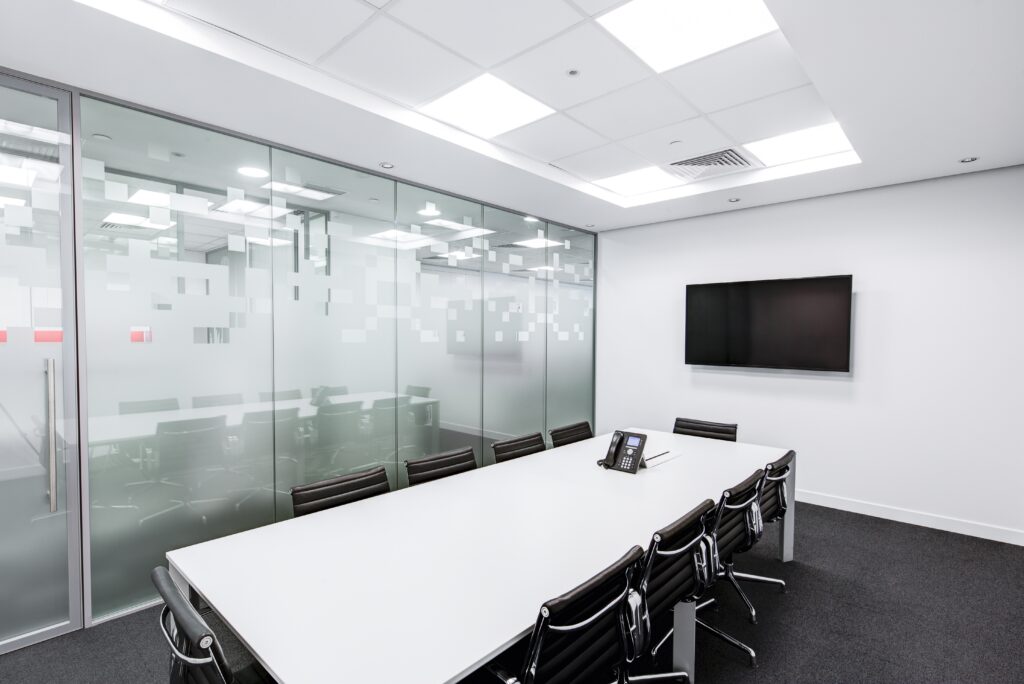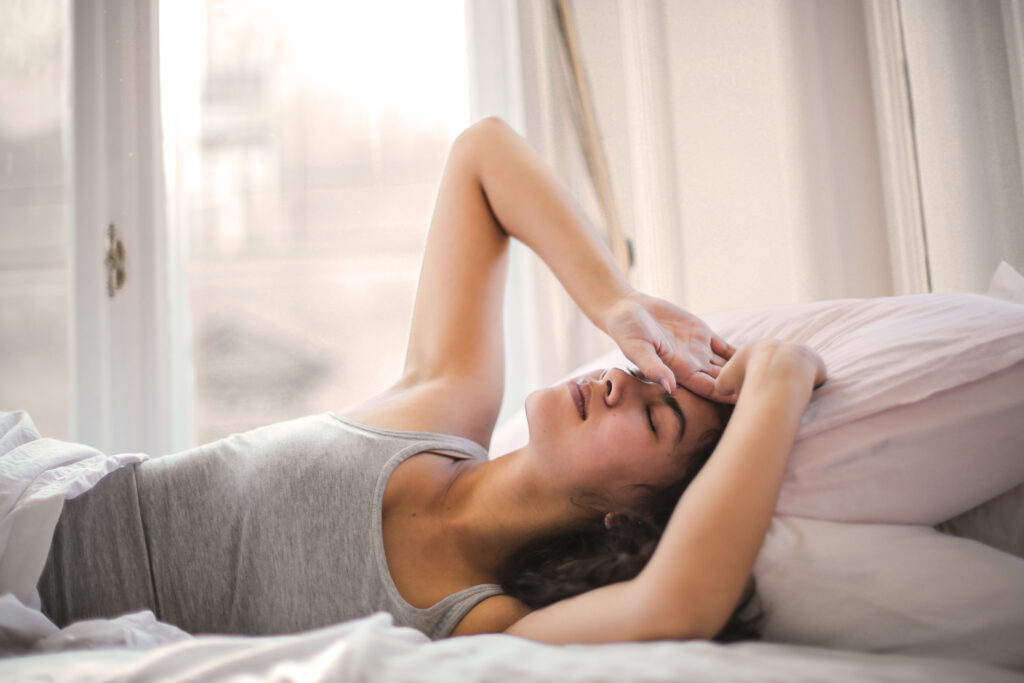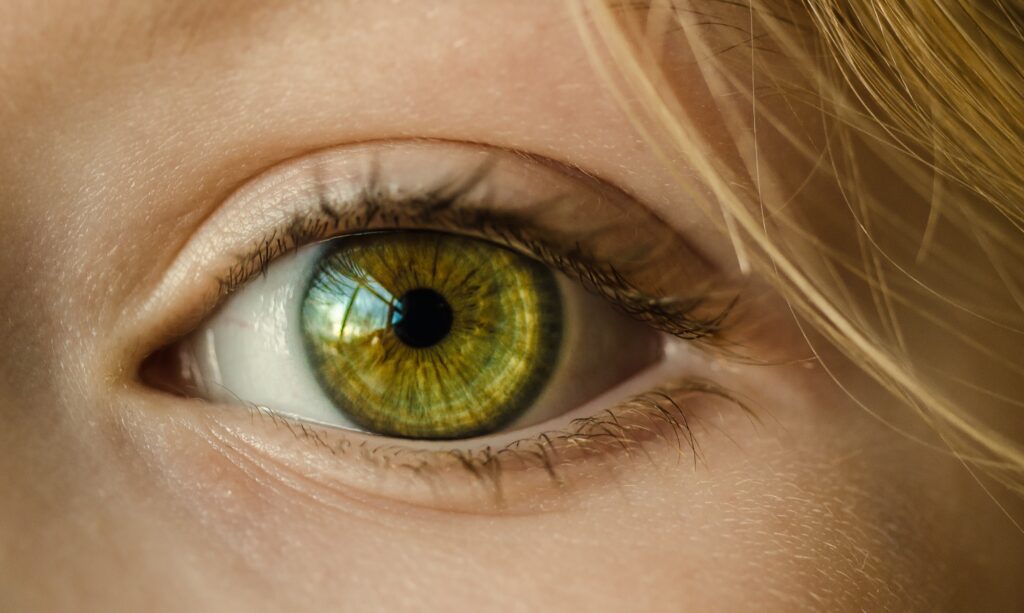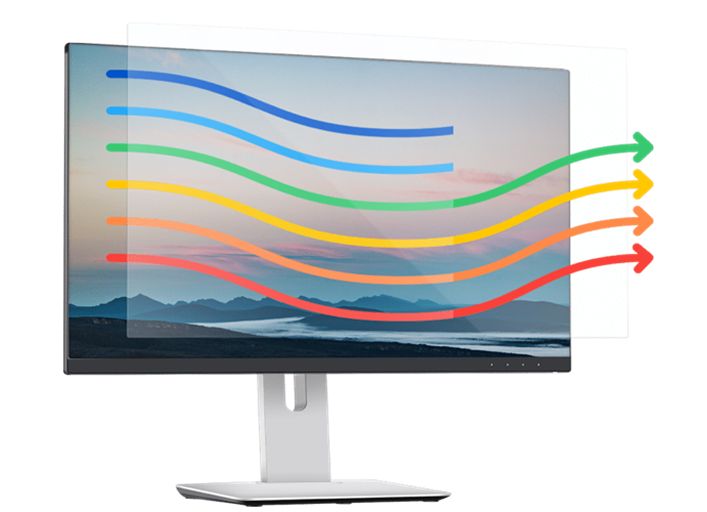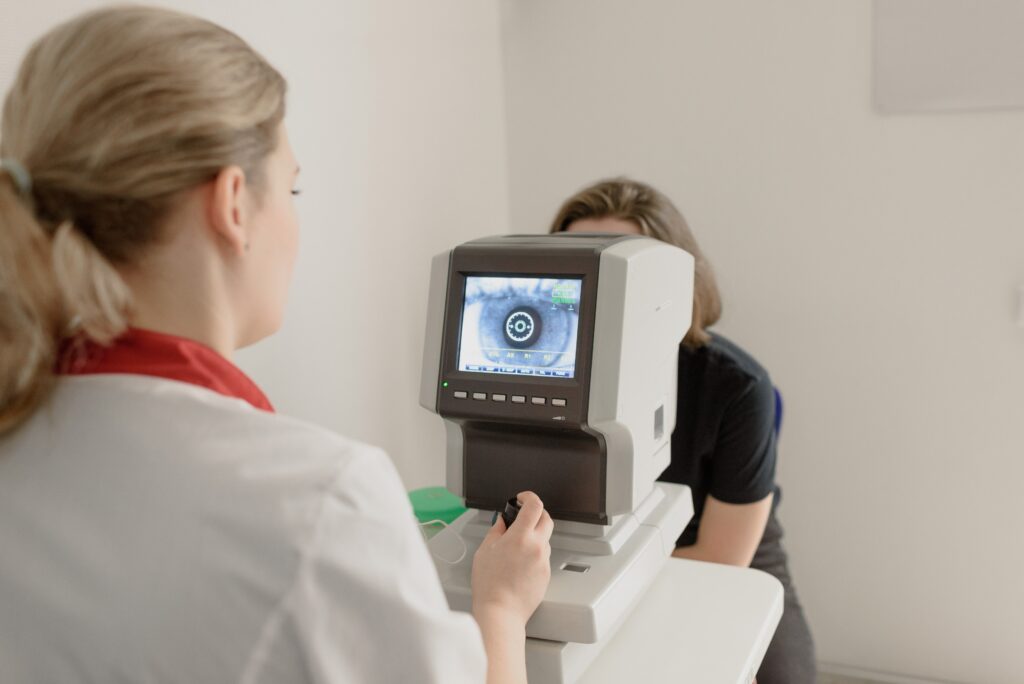Does artificial light make you ill?
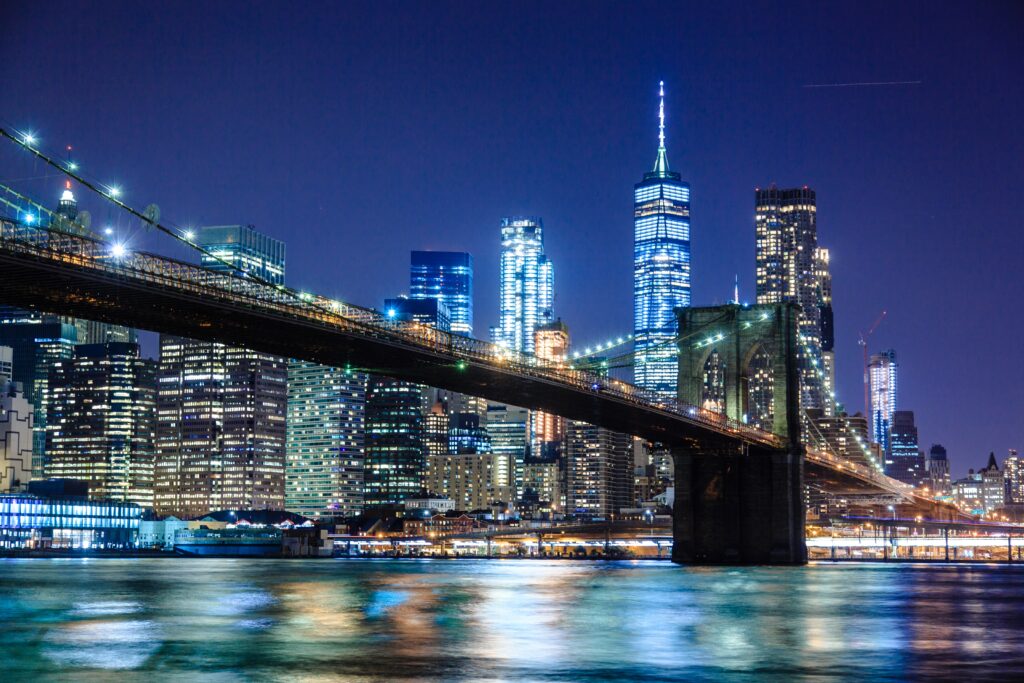
For millions of years, mankind had only known light that was associated with heat: the sun and fire. Later, candles and gas lanterns were added, and in 1879 Thomas Alva Edison invented the incandescent lamp. With it, he had changed the world in a revolutionary way. It now became possible to turn night into day. Edison’s incandescent lamp, and the halogen lamp developed later, also belonged to the group of light sources that also provide heat. These so-called thermal light sources have one thing in common: in that the colour distribution of the light, comes very close to the sun light spectrum. It is a natural light with all wavelengths from violet, blue, green, yellow to orange and red.
The sun, fire, candles, incandescent and halogen lamps also provide us with the infrared range, which is extremely important for our health. Today, the heat associated with incandescent and halogen lamps are seen as a “disadvantage” when it comes to energy consumption and heat wastefulness. But let’s face it, with an average annual temperature of less than 10° C in Germany, Austria and Switzerland, a little heat from incandescent or halogen lamps is not really a problem! Problematic in more ways are today’s artificial lights in the form of fluorescent tubes, energy-saving, and LED-lamps. The only advantage of these light sources is their low power consumption, and that’s about it. Otherwise, the modern lamps of today have only disadvantages.
Fooled and misled: Energy-saving lamps
Many people know the feeling of burning eyes after a day at the office, which may even be accompanied by a headache. Furthermore, many people over the age of 50 require glasses, have trouble falling asleep or sleeping through the night. Could this be due to our light sources? Could it be that artificial light is also as harmful as pesticides and other toxins?
One thing is sure, unhealthy light from fluorescent tubes, energy-saving- and LED-lamps have substantial disadvantages for our well-being.
Humans were born to spend the day in the great outdoors, under natural light and colours, to rest at sunset and to sleep at night. The natural rhythm of sunlight determined the daily lives of our ancestors for hundreds and thousands of years. But what do we do today? We spend most of our time indoors. During the day, light only shines through windowpanes and very often artificial light sources must be added to perceive the things around us. But artificial light, whose impulses reach the brain via the optic nerves, has a completely different composition than natural sunlight.
Conventional fluorescent tubes, energy-saving and LED-lamps do not contain the colour spectrum of sunlight, but others in excessive doses (e.g., blue light). Incandescent lamps emitted a warm colour spectrum, which was like the sunset. It has been proven unhealthy illumination will lead to a reduction of the mood-boosting neurotransmitter serotonin being produced. Instead, the organism reacts to the incorrectly composed light with increased release of the stress hormones ACTH and cortisol. Just two weeks with four hours of artificial light a day causes cortisol levels to rise by an average of 30 per cent, thus promoting elevated blood sugar levels, muscle and bone loss and abdominal obesity.
Screen time
Today we spend more time with a screen than we do sleeping, and the trend is still rising as we own more and more devices with a display. According to the Nielsen Total Audience Report: Q2 2017, the average adult in the United States spends up to 10 hours and 48 minutes a day consuming media, with 8 hours and 58 minutes of that time taking place in front of a screen. In 2016, that was 8 hours and 42 minutes, down from 7 hours and 33 minutes in 2015. Meanwhile, a 2017 Sleep Score Lab report found that 79% of the population sleeps less than 7 hours. Men sleep an average of 5 hours 45 minutes, women 6 hours and 9 minutes.
Smartphone use is responsible for the increased screen time. Between 2015 and 2017, the amount of time adults in the United States spend on their smartphones increased more than twofold. According to a study of Android users by Dscout, typical smartphone users manipulate their phones 2617 times per day. Heavy users manipulate their smartphone more than 5400 times per day. Data released by Apple showed that iPhone users unlock their phones 80 times a day. That means they look at their screen five times per waking hour.
Time spent on screens, and especially computer screens, is increasing dramatically in certain professions. In many industries, it has become normal for employees to spend their entire working day at a computer screen. Even during breaks, these employees check their smartphones, and after work many still spend most of their time sitting in front of the TV. These high levels of blue light exposure from screens can have serious and potentially permanent effects on our health.
The dangers of blue light
White sunlight, to which we have become accustomed for millions of years, consists of about 25 to 30% blue light and is useful in daylight because it increases attention, reaction times and mood. This natural blue light reduces in percentage in sunlight during the afternoon and directs our bodies into sleep mode. Computer screens and other devices emit about 35% blue light and maintain these high levels until late in the evening.
Harmful flicker frequencies
Another reason for the release of stress hormones is the fact that energy-saving lamps always flicker. “This has an effect on our brain and on our nervous system”. Our eyes usually cannot perceive the flicker directly, however, our nerve cells can. In nature, light is always uniform, without frequency, without stroboscopic flashing. Even incandescent and halogen lamps hardly flicker at all.
Sleep disorders
Our inner clock or circadian system is set up to respond to natural light. The blue light of the morning sun prevents the release of the sleep hormone melatonin and wakes us up. The red tones of the setting sun or the absence of blue light reverse this process and prepare the body for sleep at night.
Effects of blue light and sleep
While light of any kind can suppress the secretion of melatonin, blue light has a stronger effect at night. The Harvard researchers and their colleagues conducted an experiment comparing the effects of 6.5 hours of exposure to blue light with exposure to green light, of comparable brightness. The blue light suppressed melatonin two times longer than with green light and shifted the daily rhythm by twice as much (3 hours versus 1.5 hours).
In another study on blue light, researchers at the University of Toronto compared the melatonin levels of people exposed to bright indoor light and wearing blue light-blocking glasses with people regularly exposed to dim light without glasses. The fact that hormone levels were about the same in both groups reinforces the hypothesis that blue light is an effective suppressor of melatonin. It also suggests that shift workers and night owls might be able to protect themselves if they wore glasses that block blue light.
Eye health
Blue light triggers photochemical stress that can damage retinal cells in the eye. The retina is a layer of nerve cells at the back wall of the eyeball made up of neurons, also known as photoreceptors. These perceive light in the form of impulses that are transmitted to the brain via the optic nerve. The retina is protected by a layer of pigment cells known as the retinal pigment epithelium (RPE).
The retinal pigment epithelium (RPE) nourishes retinal nerve tissue by transporting molecules in and out of the retina, forming a pair of biological sunglasses that can absorb blue light. When eyes are exposed to high concentrations or prolonged exposure to blue light, this reduces their ability to absorb blue wavelengths and repair the damage. This can potentially expose the retina to unrepairable cell destruction from high energy blue light.
The 20-20-20 Rule
The 20-20-20 rule will help to prevent the worst consequences. The fact that regularly getting up and walking around for a short time has good effects is a relatively new finding. This should also be done by those who do exemplary sport 2-3 times a week. Because they should also spend many hours resting as the physical body was not designed to be in a state of emergency for a long period of time.
Every 20 minutes, focus your eyes for 20 seconds on something 20 feet or more away.
Summary
Unless you want to live on a desert island like Tom Hanks in ” Cast Away”, it is ultimately impossible to completely avoid artificial light in our lives.
Fighting the effects of blue light exposure is key to minimising eye strain, sleep disorders and eye dysfunction..
Here are a few tips
Workplace ergonomics
The set-up of the workstation plays a decisive role in reducing eye strain from the monitor. For example, the top line of the monitor should be below eye level at 50-75 cm. This means that you should be looking down at the centre of the screen at an angle of approx. 15-20 degrees.
Workplace illumination
Low ambient light levels force your eyes to process sharp differences in contrast. At the same time, very bright light, such as a window in front of or behind the screen, can strain your eyes. The ideal workplace setup would be a window angled away from your computer screen that diffuses daylight without blinding you.
New screen settings
Adjusting the brightness of your screen is a simple solution to reduce eye strain. Adjust the level of brightness to the ambient light.
Anti-blue light protection
With the help of a screen protector, it is possible to effectively block up to 90% of harmful blue light emissions before it reaches your eyes. This keeps your eyes fresh, reduces dryness and allows you to concentrate longer. The result is a crystal-clear display, without the screen discolouration that occurs with apps and night mode settings, and a healthier, more productive life!
Anti – blue light – glasses
For complete blue light protection, the eyes must be protected by a filter. High-quality glasses with blue light filters protect the wearer from all sources of blue light.
Eye examination
A variety of treatable eye conditions could add to the impact of blue light, but we often neglect our eye examinations. A survey by Simply health in the UK found that over half of people between 40 and 75 did not have a recent eye examination, even though ophthalmologists recommend that people over 40 should have their eyes checked every two years.
Enjoy the wonders of nature
Enjoy nature more often because nature positively affects your health, happiness, and vitality.
People who spend time in natural environments – forests, parks, and other places with lots of trees – experience increased immune function. One reason for this is phytoncides, the airborne chemicals that plants release to protect themselves from rot and insects, also seem to benefit humans.
When sunlight hits the skin, it starts a process that leads to the formation and activation of vitamin D, helping to prevent osteoporosis, heart attacks and cancer.
Therefore, it’s time to stop, put down your mobile phone and get outside. Make it a habit to increase your contact with nature. Take a walk, feel the wind, the grass, the sand, and the ground beneath your bare feet. Watch a sunrise, breathe deeply, and allow nature to embrace you.
Then time spent in nature will have a profound effect on your mental and physical well-being.
Therefore: get “Nature Related” and enjoy instant happiness!


